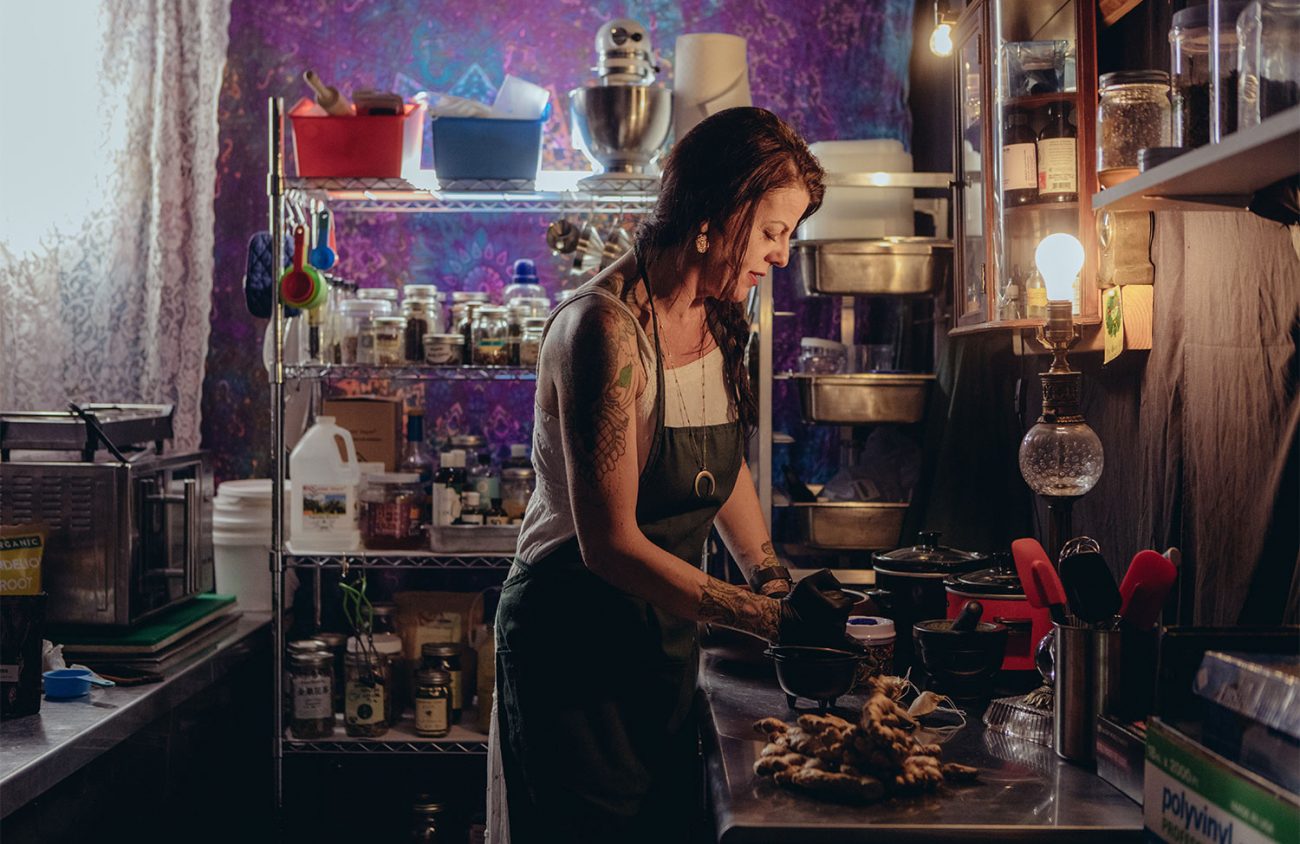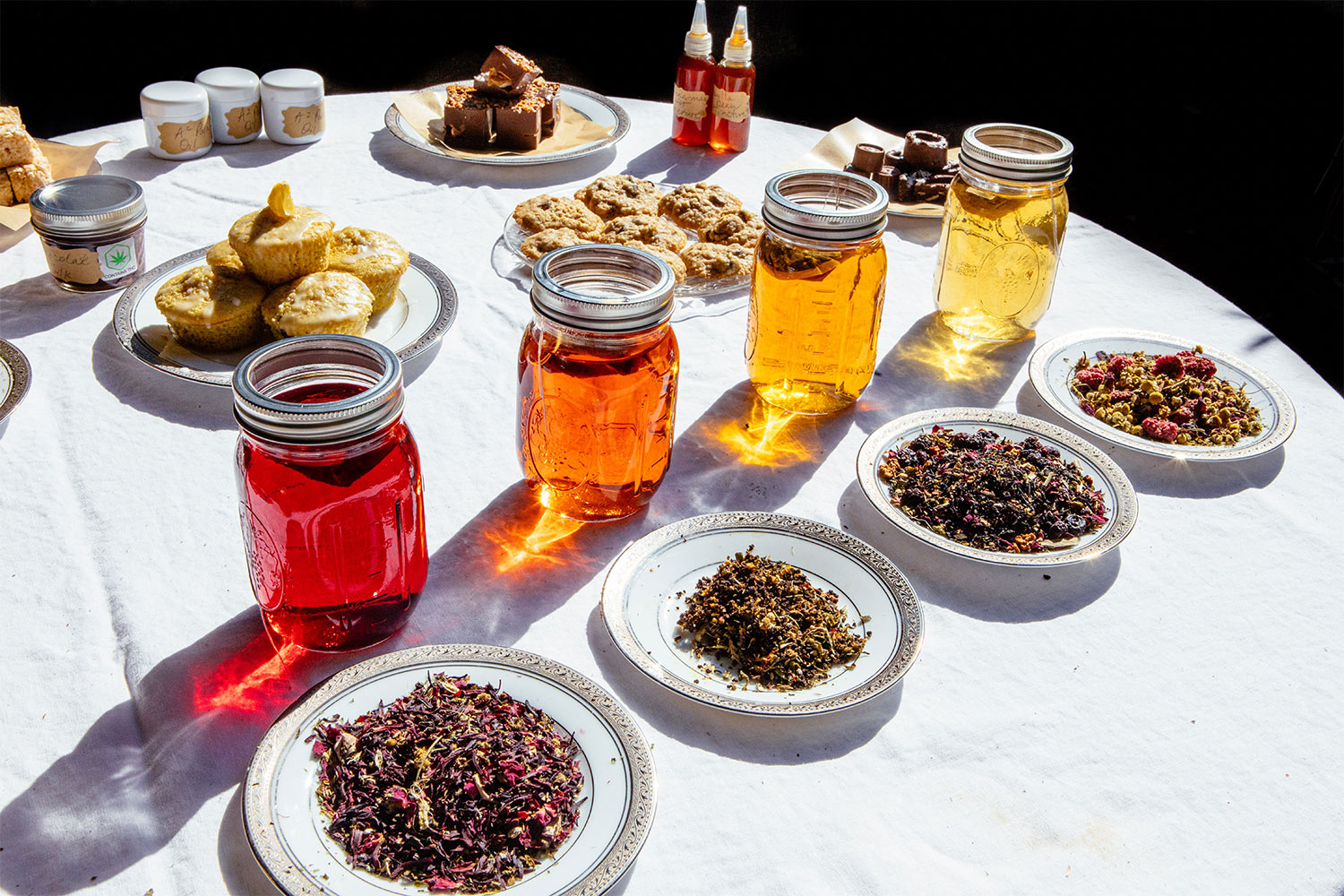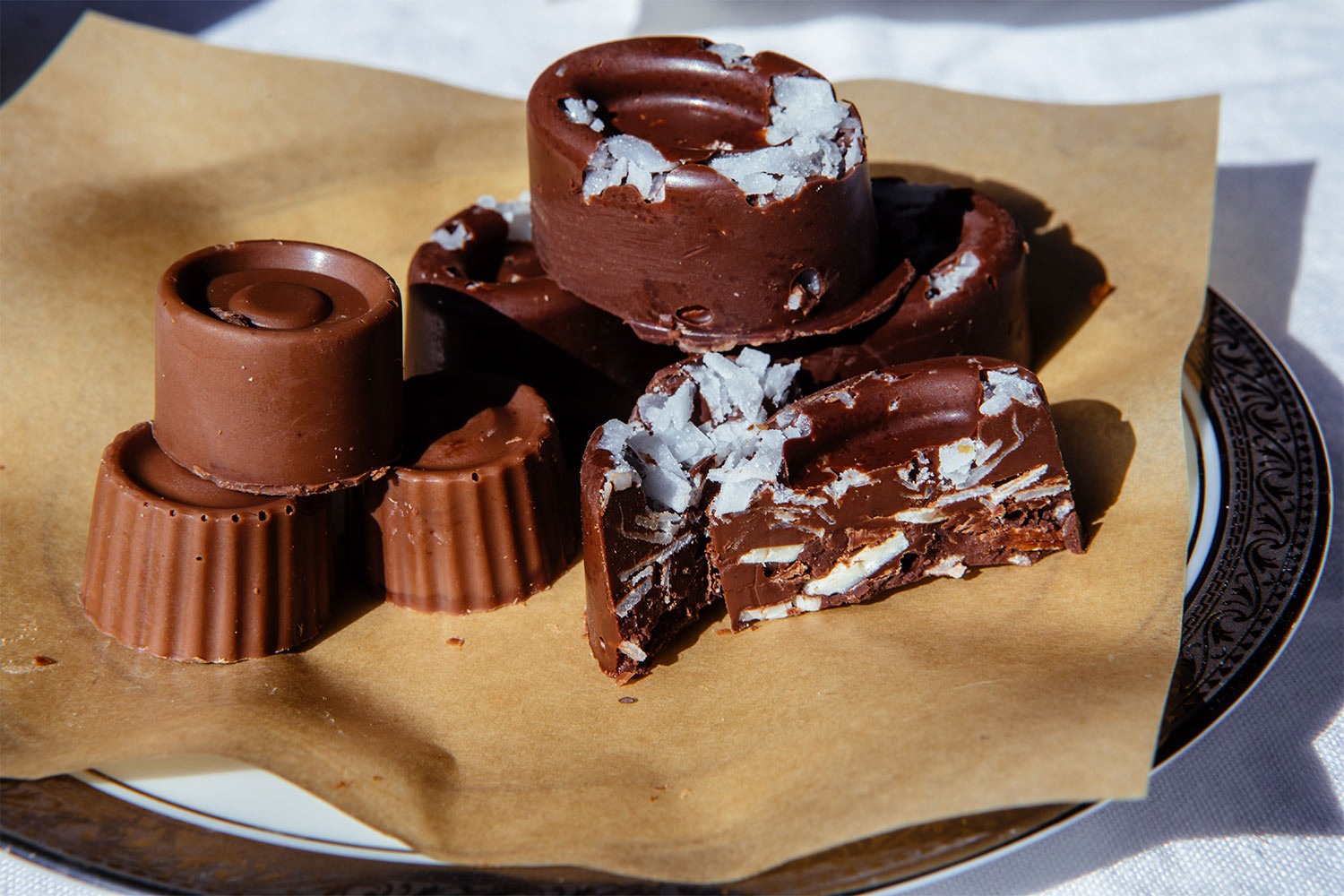Weed is a many-splendored thing. Whether you grow it fresh in the backyard, receive raw cuttings from a neighbor or purchase it dried and ready to go, the cannabis plant is extremely versatile and can be used in a multitude of easy and economically efficient goodies. Rather than letting a golden (technically green) opportunity go to waste, local cannabis connoisseurs have advice and recipes to help you utilize your cannabis to the fullest.
When working with fresh cannabis, it is often necessary to dry it to eliminate moisture. Alyssa Garten-Buttons, a budtender at Terpene Station in Eugene, recommends putting the cannabis in a small and well-ventilated room with a dehumidifier on for three to six days, until it looks more like the dried cannabis you might see in a store.
“Especially in our climate, we want to make sure that you’re not going to get any mold while it’s sitting in your jars curing,” Garten-Buttons says.
Curing involves storing cannabis in airtight containers to prevent the loss of moisture and optimize flavor, though some prefer to keep cannabis dry when making edible products.
Another important step in preparing cannabis is decarboxylation, a chemical reaction that converts cannabinoid acids like THCA into activated cannabinoids like THC. Garten-Button decarboxylates by placing her dried cannabis in the oven at 200 degrees Fahrenheit for 30-45 minutes.
After being dried and decarboxylated, cannabis can be utilized in a number of ways. One simple and quick option is to make tea. Phoebe Blume, who is passionate about making cannabis products that provide pain relief, says that tea has a fast-acting and mild effect. She mixes cannabis into her pre-made tea mixes, about one-half teaspoon cannabis to every two tablespoons tea mix, and uses one tablespoon of the mixture for every three cups of hot water.
“The longer you steep your tea, the more strength you’re going to have, from every herb in that tea,” Blume says. “That’s kind of one of those nice, self-regulating products.”
Blume also makes tinctures, another cannabis infusion. She adds decarboxylated cannabis to a mason jar with glycerin and a flavor such as cinnamon or vanilla. She puts the mason jars in a crock pot with water and heats on low for 24-48 hours, shaking them every hour while she is awake. After straining, a 12-ounce jar will produce about eight ounces of tincture. Two to four drops can be applied to the tongue before sleep, for pain or for anxiety.
Liz Porter, a medical cannabis user, makes cannabutter. For convenience, Porter uses a device called the Magical Butter Machine, which heats, blends and infuses ingredients, though Garten-Buttons says that cannabutter can also be made easily in a crockpot. Porter says to use anywhere between one and five ounces of cannabis per pound of butter, depending on desired strength. She either uses coconut oil or clarified butter, and adds a heaping tablespoon of sunflower lecithin as an emulsifier to mix the butter and cannabis extract evenly.
Porter’s Magical Butter opens the door to a number of other goodies. She makes cookies using any cookie recipe that calls for a half cup of butter. When we spoke, it was Betty Crocker’s chocolate chip cookies in the oven. One batch of cannabutter, she says, can make about 150 cookies.
A clear liquid byproduct is released from the Magical Butter Machine when she makes butter, and she uses this for cooking. When she makes butter with coconut oil, she says the fiber byproducts squeezed out of the butter can be used to make an exfoliating scrub. If you aren’t using a Magical Butter Machine, she says, jelly bags can be used to collect fiber byproduct.
Blume also works with coconut oil and cannabis and says that a coconut oil infusion is a great option if the plant you’re working with is old or needs salvaging. She also says in this case the plant does not need to be dried or decarboxylated, as the slow and low cooking process will activate the necessary compounds. To make, she adds a handful of cannabis to 32 ounces of coconut oil. She cooks it in a crock pot for a few hours, or even a day, to prepare fully, and strains it through something fine, like a coffee filter. The result is a “nice, light green coconut oil.”
She uses this oil in cooking and baking. One of her most versatile treats is her THC chocolate, which whisks together one cup evaporated milk, one pint heavy whipping cream, one cup corn syrup or agave, two cups granulated sugar, one cup dark brown sugar and one cup of THC coconut oil on low heat until smooth, stirring frequently and slowly raising the temperature to high. When the temperature reaches 220 degrees Fahrenheit, which Blume uses a candy thermometer to measure, she adds one tablespoon of baker’s vanilla and 10 to 12 ounces of semi-sweet or dark chocolate baking chips.
Blume then seals the chocolate mixture in jelly jars that need to be refrigerated once open. She says it can be mixed into espresso and foamed milk for a mocha, warmed and mixed into ice cream or eaten straight from the jar.
So many Eugeneans have access to the cannabis plant, and Blume says she’d love to see more people working with it and getting experimental on their own.
“Even if it doesn’t work the first time, or the first three times, just keep trying and just keep looking online and reading,” Blume says. “Don’t be discouraged, let it just be a creative process. And don’t overdose on your own product.” •


